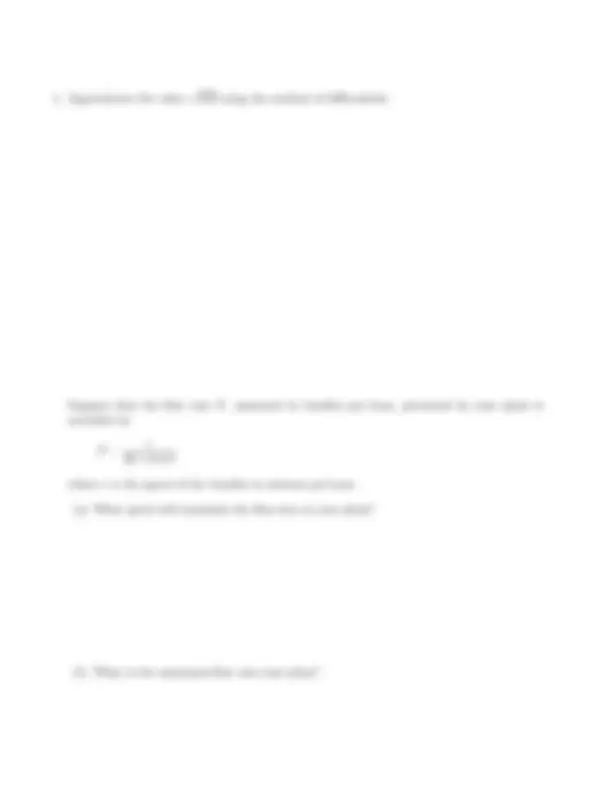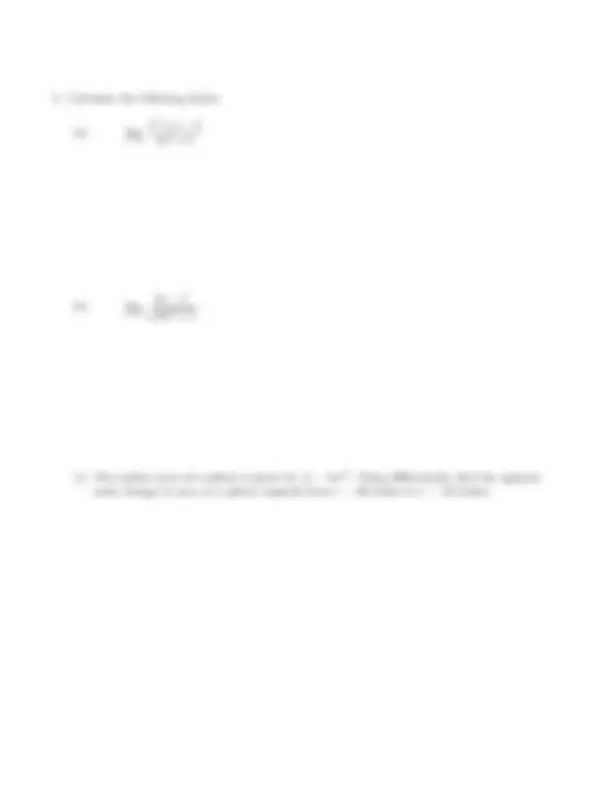





Study with the several resources on Docsity

Earn points by helping other students or get them with a premium plan


Prepare for your exams
Study with the several resources on Docsity

Earn points to download
Earn points by helping other students or get them with a premium plan
Community
Ask the community for help and clear up your study doubts
Discover the best universities in your country according to Docsity users
Free resources
Download our free guides on studying techniques, anxiety management strategies, and thesis advice from Docsity tutors
Material Type: Exam; Professor: Thistleton; Class: Calculus I; Subject: Mathematics; University: SUNY Institute of Technology at Utica-Rome; Term: Spring 1998;
Typology: Exams
1 / 5

This page cannot be seen from the preview
Don't miss anything!




MAT321 Exam 2 7 April, 1998 Prof. Thistleton
(a) f (x) = sin(x)cos(x)
(b) g(x) =
2 x + 1 x − 1
(c) h(x) = sin(x^3 + 5)
(d) l(x) =
x^2 + 1 (2x + 3)^2
(e) p(x) = sec(x^2 )
s(t) = 9 − 6 t^2 + 2t^3
for 0 <= t <= 4.
(a) Find the critical numbers of this function.
(b) When does it reach its maximum distance from the origin?
(c) What is its maximum distance?
(d) When does it reach its minimum distance from the origin?
(e) What is its minimum distance?
102 using the method of differentials.
Suppose that the flow rate F , measured in bundles per hour, processed by your plant is modelled by
v 10 + 0. 1 v^2
where v is the speed of the bundles in stations per hour.
(a) What speed will maximize the flow rate at your plant?
(b) What is the maximum flow rate your plant?
(a) (^) xlim→∞
x^2 + x − 4 3 x^3 + 5
(b) (^) xlim→∞
2 x − 1 √ 9 x^2 + 1
(c) The surface area of a sphere is given by A = 4πr^2. Using differentials, find the approxi- mate change in area as a sphere expands from r = 20 inches to r = 23 inches.